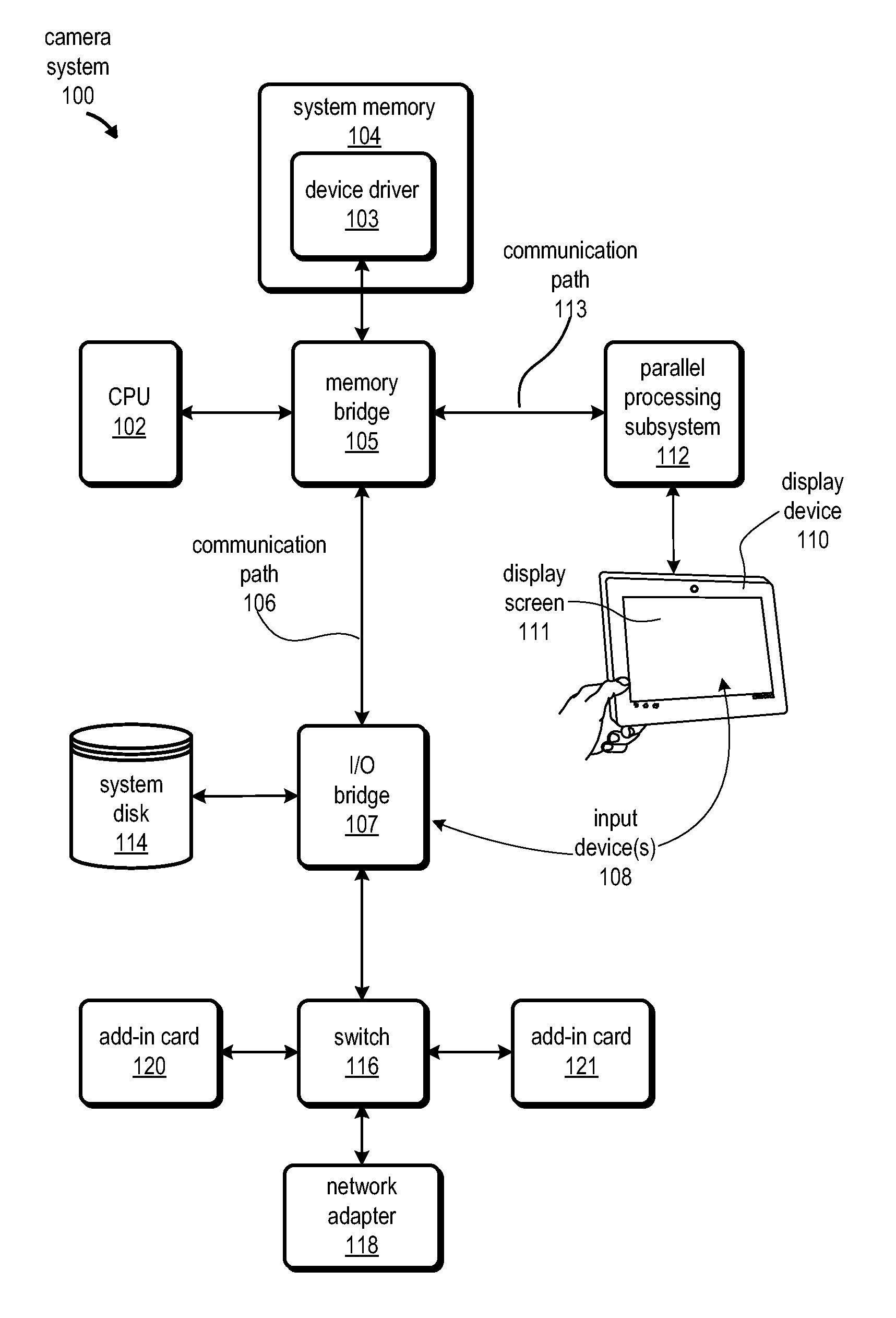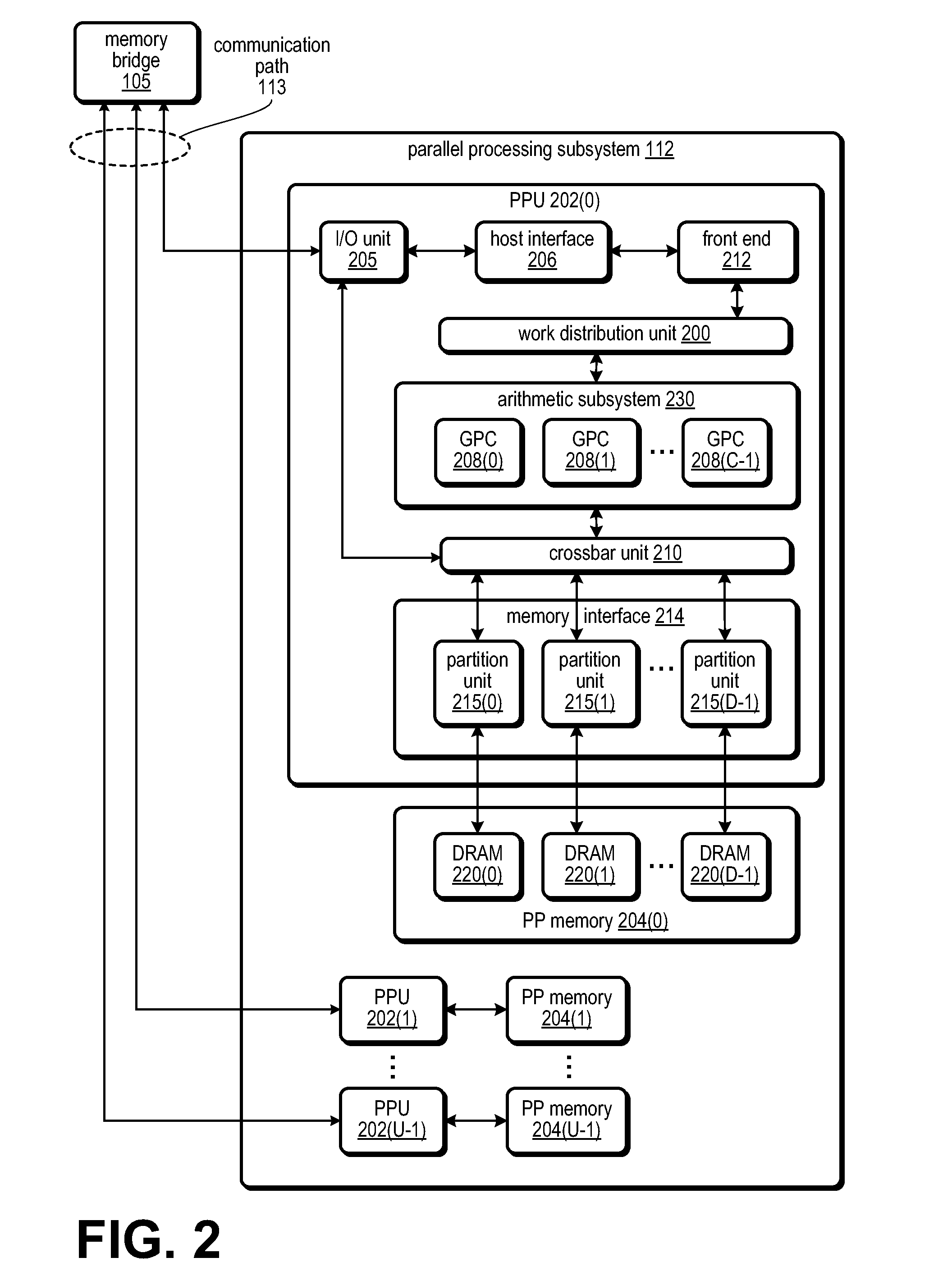Approach for camera control
- Summary
- Abstract
- Description
- Claims
- Application Information
AI Technical Summary
Benefits of technology
Problems solved by technology
Method used
Image
Examples
example viewfinder
Editing
[0055]FIGS. 4A-4E are a sequence of diagrams that illustrate editing on a viewfinder device 308 of a user interface device 306, according various embodiments of the present invention. The camera control system processes viewfinder edits to display more accurately an image that the user intends to capture. The camera continuously captures frames of the scene at which the camera lens is pointing and continuously uses the frames for processing in back-end operations. The back-end operations involve operations that combine the viewfinder edits and the captured frames of the camera. Accordingly, the camera control of the approach involves operations that are ongoing, iterative, and highly dependent on one another. Thus, the viewfinder editing occurs in real-time (e.g., while the camera captures frames of the scene for back-end processing).
[0056]FIG. 4A is a conceptual diagram of a camera system 302 during an initial stage of camera control operations, according to one embodiment o...
PUM
 Login to View More
Login to View More Abstract
Description
Claims
Application Information
 Login to View More
Login to View More - R&D
- Intellectual Property
- Life Sciences
- Materials
- Tech Scout
- Unparalleled Data Quality
- Higher Quality Content
- 60% Fewer Hallucinations
Browse by: Latest US Patents, China's latest patents, Technical Efficacy Thesaurus, Application Domain, Technology Topic, Popular Technical Reports.
© 2025 PatSnap. All rights reserved.Legal|Privacy policy|Modern Slavery Act Transparency Statement|Sitemap|About US| Contact US: help@patsnap.com



